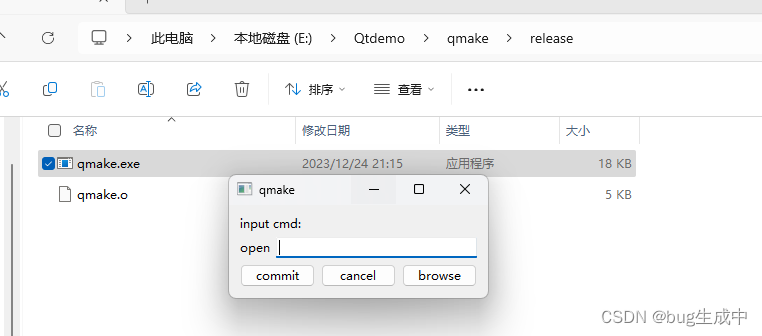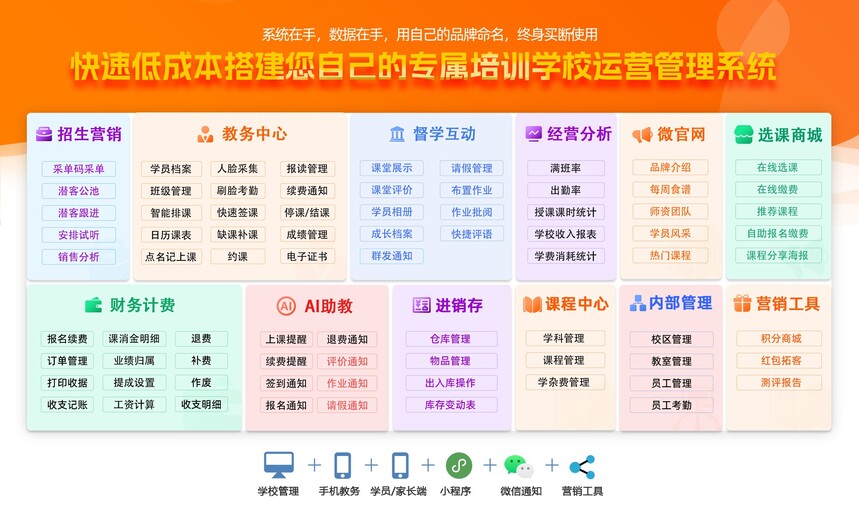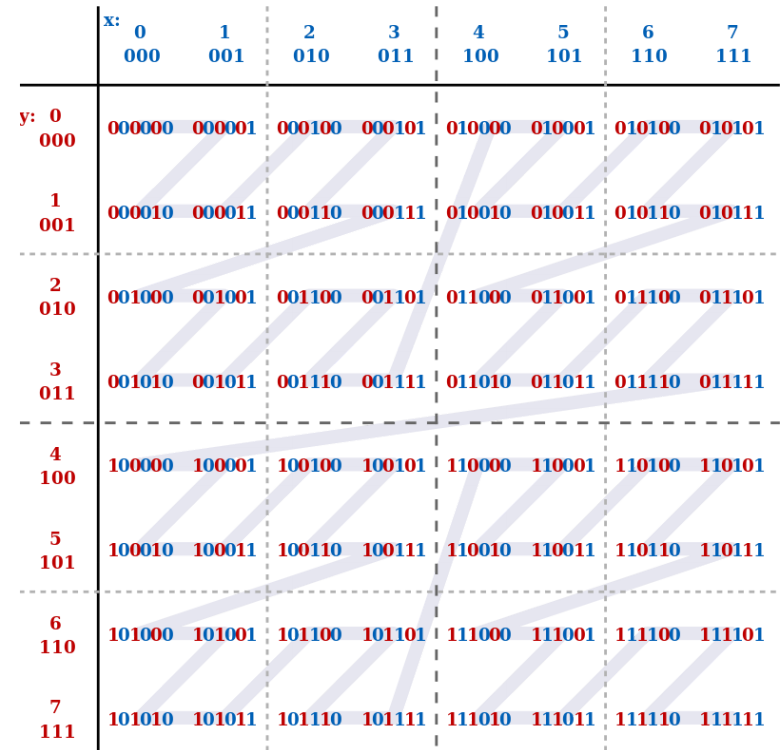文章目录
- 1 IP地址定位解析
- 1.1 获取用户 IP 地址
- 1.2 淘宝库获取用户 IP 地址属地
- 1.3 通过 Ip2region 定位
- 1.3.1 Ip2region 介绍
- 1.3.2 Ip2region 特性
- 1.3.3 客户端实现
- 1.3.3.1 引入 Maven 仓库
- 1.3.3.2 基于文件查询
- 1.3.3.3 缓存VectorIndex索引
- 1.3.3.4 缓存整个 xdb 数据
1 IP地址定位解析
1.1 获取用户 IP 地址
在 Java 中,是如何获取到 IP 属地的,主要有以下两步:
- 通过
HttpServletRequest对象,获取用户的IP地址 - 通过
IP地址,获取对应的省份、城市
首先,我们这里写一个工具类用于获取 IP 地址,因为用户的每次 Request 请求都会携带请求的 IP 地址放到请求头中,所以我们可以通过截取请求中的 IP 来获取 IP 地址;
/**
* 网络工具类
*
*/
public class NetUtils {
/**
* 获取客户端 IP 地址
*
* @param request
* @return
*/
public static String getIpAddress(HttpServletRequest request) {
String ip = request.getHeader("x-forwarded-for");
if (ip == null || ip.length() == 0 || "unknown".equalsIgnoreCase(ip)) {
ip = request.getHeader("Proxy-Client-IP");
}
if (ip == null || ip.length() == 0 || "unknown".equalsIgnoreCase(ip)) {
ip = request.getHeader("WL-Proxy-Client-IP");
}
if (ip == null || ip.length() == 0 || "unknown".equalsIgnoreCase(ip)) {
ip = request.getRemoteAddr();
if (ip.equals("127.0.0.1")) {
// 根据网卡取本机配置的 IP
InetAddress inet = null;
try {
inet = InetAddress.getLocalHost();
} catch (Exception e) {
e.printStackTrace();
}
if (inet != null) {
ip = inet.getHostAddress();
}
}
}
// 多个代理的情况,第一个IP为客户端真实IP,多个IP按照','分割
if (ip != null && ip.length() > 15) {
if (ip.indexOf(",") > 0) {
ip = ip.substring(0, ip.indexOf(","));
}
}
// 本机访问
if ("localhost".equalsIgnoreCase(ip) || "127.0.0.1".equalsIgnoreCase(ip) || "0:0:0:0:0:0:0:1".equalsIgnoreCase(ip)){
// 根据网卡取本机配置的IP
InetAddress inet;
try {
inet = InetAddress.getLocalHost();
ip = inet.getHostAddress();
} catch (UnknownHostException e) {
e.printStackTrace();
}
}
// 如果查找不到 IP,可以返回 127.0.0.1,可以做一定的处理,但是这里不考虑
// if (ip == null) {
// return "127.0.0.1";
// }
return ip;
}
/**
* 获取mac地址
*/
public static String getMacAddress() throws Exception {
// 取mac地址
byte[] macAddressBytes = NetworkInterface.getByInetAddress(InetAddress.getLocalHost()).getHardwareAddress();
// 下面代码是把mac地址拼装成String
StringBuilder sb = new StringBuilder();
for (int i = 0; i < macAddressBytes.length; i++) {
if (i != 0) {
sb.append("-");
}
// mac[i] & 0xFF 是为了把byte转化为正整数
String s = Integer.toHexString(macAddressBytes[i] & 0xFF);
sb.append(s.length() == 1 ? 0 + s : s);
}
return sb.toString().trim().toUpperCase();
}
}
1.2 淘宝库获取用户 IP 地址属地
通过这个方法,就可以重请求头中获取到用户的 IP 地址了,然后接下来就是 IP 地址归属地省份、城市的获取了,这里可以用很多 IP 地址查询的库进行查询,这里用一个库来测试一下。
淘宝 IP 地址库:ip.taobao.com/
但是,淘宝的 IP 地址查询库已经在 2022 年 3 月 31 日下线了,这里我们就不能使用它了,只能另辟蹊径了。
1.3 通过 Ip2region 定位
1.3.1 Ip2region 介绍
这个是在之前的一篇文章看到的,是一个 Gthub 的开源项目,即 Ip2region 开源项目
地址:https://github.com/lionsoul2014/ip2region
这个开源库目前已经更新到了 V2 的版本,现在的它是一个强大的离线IP地址定位库和IP定位数据管理框架,其达到了微秒级别的查询效率,还提供了众多主流编程语言的 xdb 数据生成和查询客户端实现,可以说是非常得好用
1.3.2 Ip2region 特性
- 查询准确率极高
数据聚合了一些知名 ip 到地名查询提供商的数据,这些是他们官方的的准确率,经测试着实比经典的纯真 IP 定位准确一些。ip2region的数据聚合自以下服务商的开放 API 或者数据(升级程序每秒请求次数 2 到 4 次),比例如下:- 80%, 淘宝 IP 地址库, ip.taobao.com/%5C
- ≈10%, GeoIP, geoip.com/%5C
- ≈2%, 纯真 IP 库, www.cz88.net/%5C
- IP 数据管理框架
xdb支持亿级别的 IP 数据段行数,默认的 region 信息都固定了格式:国家|区域|省份|城市|ISP,缺省的地域信息默认是0。
region信息支持完全自定义,例如:可以在region中追加特定业务需求的数据,例如:GPS信息/国际统一地域信息编码/邮编等。也就是你完全可以使用 ip2region 来管理你自己的 IP 定位数据。 - 数据去重和压缩
xdb格式生成程序会自动去重和压缩部分数据,默认的全部IP数据,生成的ip2region.xdb数据库是 11MiB,随着数据的详细度增加数据库的大小也慢慢增大。 - 极速查询响应
即使是完全基于xdb文件的查询,单次查询响应时间在十微秒级别,可通过如下两种方式开启内存加速查询:vIndex索引缓存:使用固定的 512KiB 的内存空间缓存vector index数据,减少一次 IO 磁盘操作,保持平均查询效率稳定在10-20微秒之间。xdb整个文件缓存:将整个xdb文件全部加载到内存,内存占用等同于 xdb 文件大小,无磁盘 IO 操作,保持微秒级别的查询效率。
- 多语言以及查询客户端的支持
已经客户端有:Java、C#、php、C、Python、Node.js、PHP 拓展(PHP 5 和 PHP 7)等,主要如下:

1.3.3 客户端实现
1.3.3.1 引入 Maven 仓库
由于项目使用 Spring 的方式构建,这里可以选择使用引入 Spring 的 starter 的方式进行
<dependency>
<groupId>com.github.hiwepy</groupId>
<artifactId>ip2region-spring-boot-starter</artifactId>
<version>2.0.1.RELEASE</version>
</dependency>
<dependency>
<groupId>org.lionsoul</groupId>
<artifactId>ip2region</artifactId>
<version>2.7.0</version>
</dependency>
1.3.3.2 基于文件查询
import org.lionsoul.ip2region.xdb.Searcher;
import java.io.*;
import java.util.concurrent.TimeUnit;
public class SearcherTest {
public static void main(String[] args) {
// 1、创建 searcher 对象
String dbPath = "ip2region.xdb file path";
Searcher searcher = null;
try {
searcher = Searcher.newWithFileOnly(dbPath);
} catch (IOException e) {
System.out.printf("failed to create searcher with `%s`: %s\n", dbPath, e);
return;
}
// 2、查询
try {
String ip = "1.2.3.4";
long sTime = System.nanoTime();
String region = searcher.search(ip);
long cost = TimeUnit.NANOSECONDS.toMicros((long) (System.nanoTime() - sTime));
System.out.printf("{region: %s, ioCount: %d, took: %d μs}\n", region, searcher.getIOCount(), cost);
} catch (Exception e) {
System.out.printf("failed to search(%s): %s\n", ip, e);
}
// 3、备注:并发使用,每个线程需要创建一个独立的 searcher 对象单独使用。
}
}
1.3.3.3 缓存VectorIndex索引
我们可以提前从 xdb 文件中加载出来 VectorIndex 数据,然后全局缓存,每次创建 Searcher 对象的时候使用全局的 VectorIndex 缓存可以减少一次固定的 IO 操作,从而加速查询,减少 IO 压力。
import org.lionsoul.ip2region.xdb.Searcher;
import java.io.*;
import java.util.concurrent.TimeUnit;
public class SearcherTest {
public static void main(String[] args) {
String dbPath = "ip2region.xdb file path";
// 1、从 dbPath 中预先加载 VectorIndex 缓存,并且把这个得到的数据作为全局变量,后续反复使用。
byte[] vIndex;
try {
vIndex = Searcher.loadVectorIndexFromFile(dbPath);
} catch (Exception e) {
System.out.printf("failed to load vector index from `%s`: %s\n", dbPath, e);
return;
}
// 2、使用全局的 vIndex 创建带 VectorIndex 缓存的查询对象。
Searcher searcher;
try {
searcher = Searcher.newWithVectorIndex(dbPath, vIndex);
} catch (Exception e) {
System.out.printf("failed to create vectorIndex cached searcher with `%s`: %s\n", dbPath, e);
return;
}
// 3、查询
try {
String ip = "1.2.3.4";
long sTime = System.nanoTime();
String region = searcher.search(ip);
long cost = TimeUnit.NANOSECONDS.toMicros((long) (System.nanoTime() - sTime));
System.out.printf("{region: %s, ioCount: %d, took: %d μs}\n", region, searcher.getIOCount(), cost);
} catch (Exception e) {
System.out.printf("failed to search(%s): %s\n", ip, e);
}
// 备注:每个线程需要单独创建一个独立的 Searcher 对象,但是都共享全局的制度 vIndex 缓存。
}
}
1.3.3.4 缓存整个 xdb 数据
我们也可以预先加载整个 ip2region.xdb 的数据到内存,然后基于这个数据创建查询对象来实现完全基于文件的查询,类似之前的 memory search。
import org.lionsoul.ip2region.xdb.Searcher;
import java.io.*;
import java.util.concurrent.TimeUnit;
public class SearcherTest {
public static void main(String[] args) {
String dbPath = "ip2region.xdb file path";
// 1、从 dbPath 加载整个 xdb 到内存。
byte[] cBuff;
try {
cBuff = Searcher.loadContentFromFile(dbPath);
} catch (Exception e) {
System.out.printf("failed to load content from `%s`: %s\n", dbPath, e);
return;
}
// 2、使用上述的 cBuff 创建一个完全基于内存的查询对象。
Searcher searcher;
try {
searcher = Searcher.newWithBuffer(cBuff);
} catch (Exception e) {
System.out.printf("failed to create content cached searcher: %s\n", e);
return;
}
// 3、查询
try {
String ip = "1.2.3.4";
long sTime = System.nanoTime();
String region = searcher.search(ip);
long cost = TimeUnit.NANOSECONDS.toMicros((long) (System.nanoTime() - sTime));
System.out.printf("{region: %s, ioCount: %d, took: %d μs}\n", region, searcher.getIOCount(), cost);
} catch (Exception e) {
System.out.printf("failed to search(%s): %s\n", ip, e);
}
// 备注:并发使用,用整个 xdb 数据缓存创建的查询对象可以安全的用于并发,也就是你可以把这个 searcher 对象做成全局对象去跨线程访问。
}
}




![概率中的50个具有挑战性的问题[02/50]:连续获胜](https://img-blog.csdnimg.cn/img_convert/fab2aae23fd92fec5d5018ff37b32af2.png)
![[c]扫雷](https://img-blog.csdnimg.cn/img_convert/b1a6522aec2533493b917d7ee6d245cd.png)













